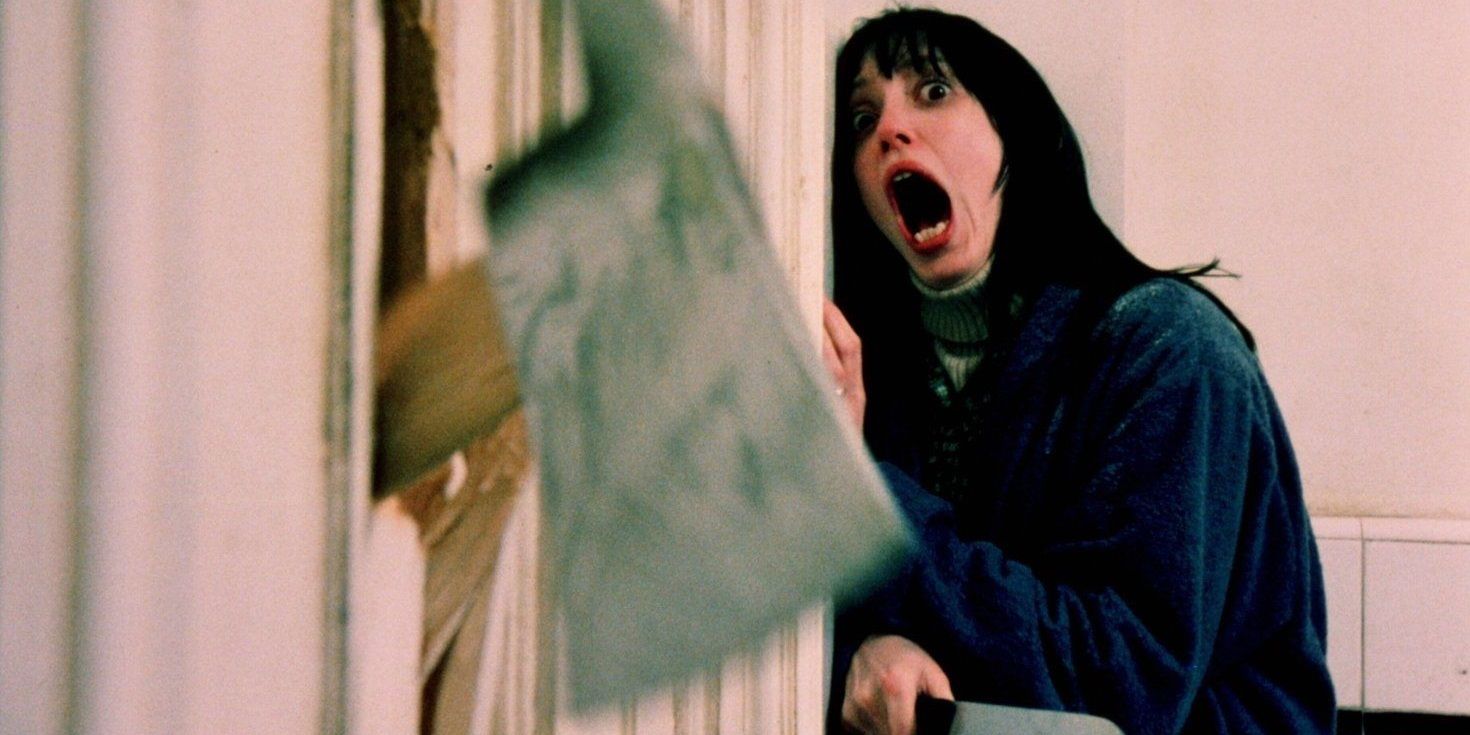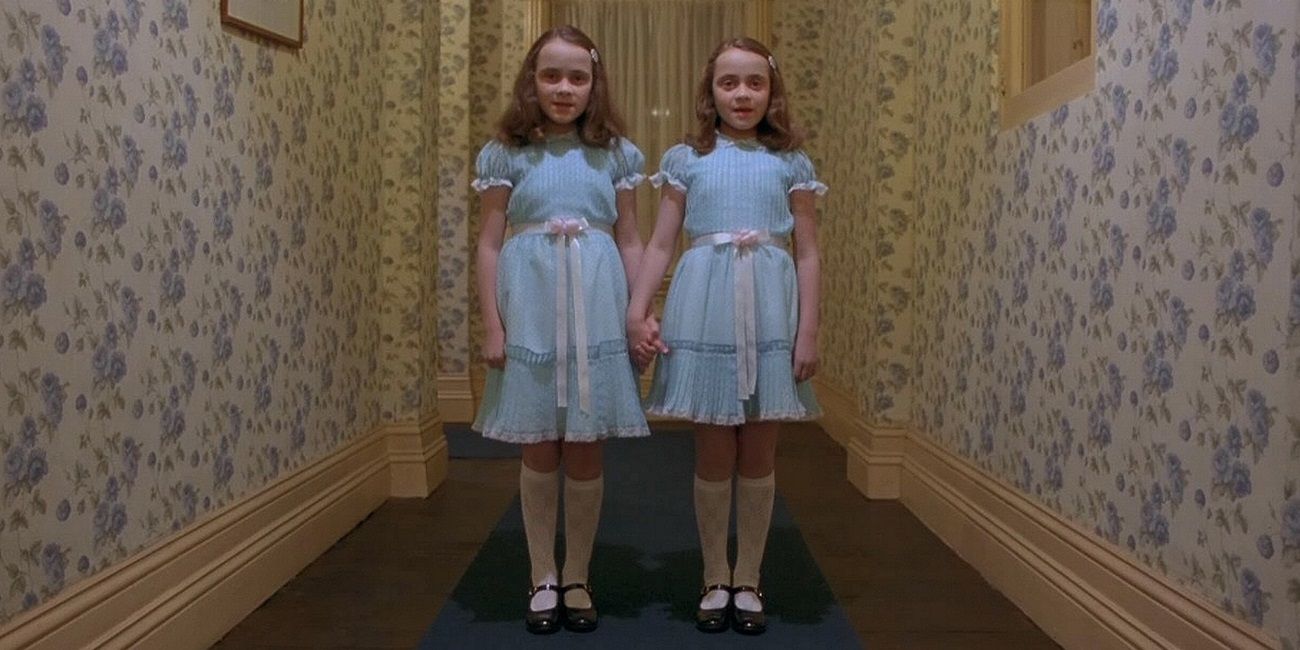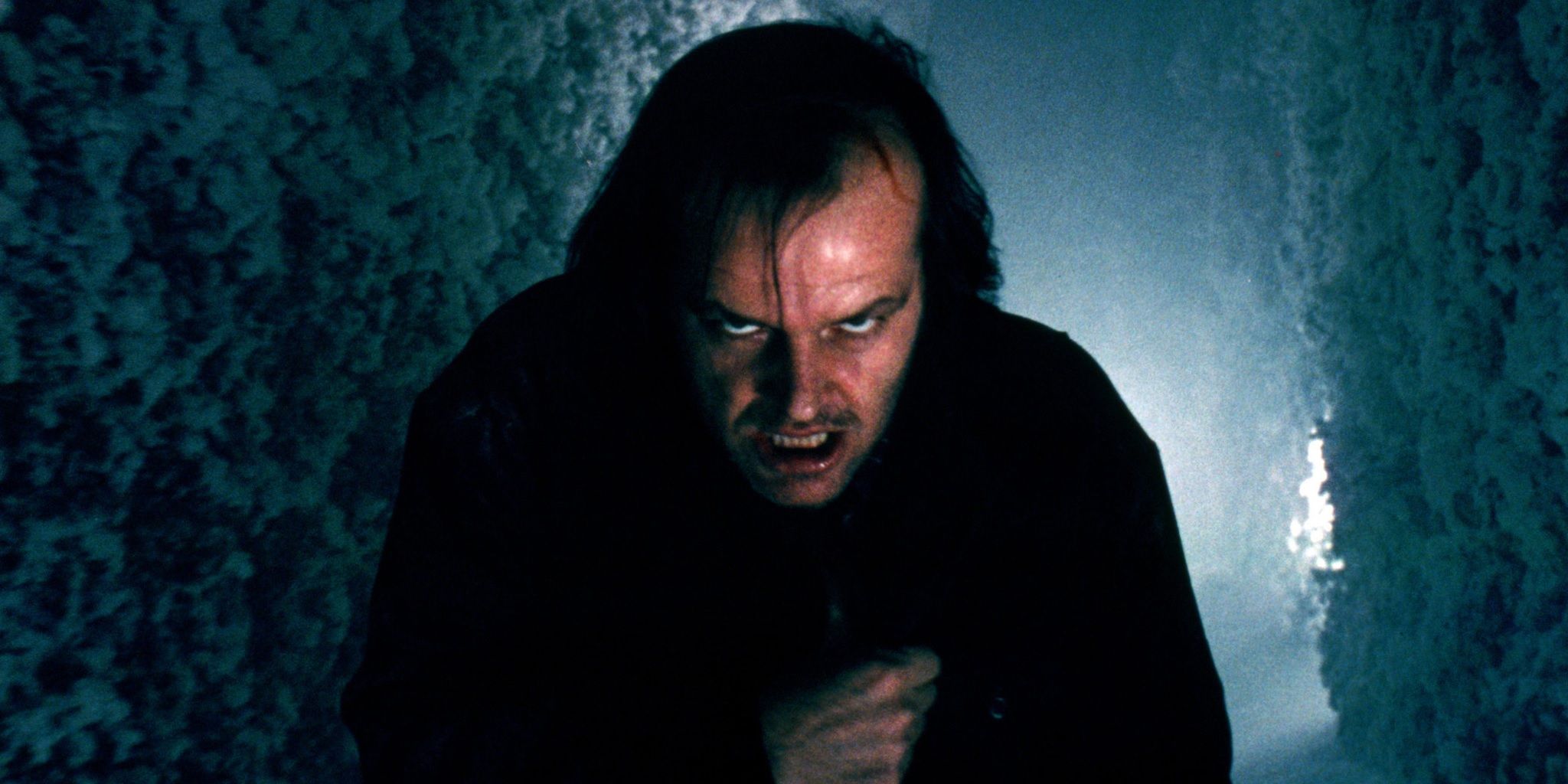Both Stephen King’s The Shining and Stanley Kubrick’s 1980 film adaptation are monumental works in their respective fields. King’s book is an engrossing read and one of the bestselling horror novels ever written, while Kubrick’s film is a masterpiece of horror cinema, standing shoulder-to-shoulder with the genre’s most iconic works. While both the novel and the movie have a lot of merit, the movie is arguably a much stronger work of horror. Kubrick’s changes to the source material added new layers of terror and ambiguity to the downfall of Jack Torrance and the result is a darker, more unnerving, and ultimately more effective horror story.
King famously hated Kubrick’s movie. Kubrick had gone on record saying that he thought the novel itself was pretty weak, and that his interest in adapting it came from his appreciation for the premise alone. The director departed drastically from King’s telling of the story in coming up with his own take on the premise of a struggling writer turning on his family while working as a winter caretaker at the snowbound Overlook Hotel. King, in turn, hated the movie, despite its widespread acclaim, because he thought its unfaithfulness to the source material missed the point.
The opening scenes of Kubrick’s movie set up the premise similarly to King’s novel, although the dark secrets of the Overlook are withheld from Jack before he takes the job in the book and they’re revealed to him in the interview in the movie. The job interview scene in the movie with Mr. Ullman is a masterclass in horror exposition, conveying all the necessary information to foreshadow the Torrances’ inevitable terrifying fate in a Q&A setting that allows for blunt, long-winded explanations of things. Then, once Jack and his family are on their way to the Overlook, Kubrick deviates wildly from King’s story.
In the book, Jack is an inherently good man who loves his family. He only turns evil and violent when the ghosts of the Overlook get their hooks in him. In the movie, thanks to the pitch-perfect casting of Jack Nicholson to angrily grin his way through every scene, Jack is pretty clearly insane or close to insane from the offset. He isn’t a loving family man, because he’s easily frustrated by his wife and son. He isn’t inherently good, because he doesn’t regret hurting Danny. This Jack is dark and disturbed. If his son didn’t have telepathic powers and there weren’t ghosts manipulating him to axe-murder his family, Jack would still be a terrifying character.
In the book, there are clearly paranormal forces influencing Jack’s behavior, but in the movie, it’s feasible that he’s doing it all on his own. In the movie’s early scenes, he looks like he’s about to snap. It’s possible that the on-screen horrors are all in Jack’s head brought on by being stuck in isolation with a wife and son he can’t stand. King’s version of Jack leads a standard haunted house story; Kubrick’s incarnation is much more unsettling.
Kubrick and screenwriter Diane Johnson are credited as having written the script for The Shining, but they didn’t finalize a shooting script before filming began. Instead, they figured out the story as they went along. Jack Nicholson eventually threw out his own pages, because they were constantly being replaced. Kubrick saw The Shining as “the story of one man’s family quietly going insane together,” and wasn’t as interested in hitting precise plot beats as charting that disturbing psychological journey.
Interestingly, on the page, Danny’s imaginary friend Tony can be “seen,” but in translating the story to the screen, Kubrick kept Tony off-screen. He’s depicted as being entirely in Danny’s head, speaking through his index finger – Danny even affects a growly voice to speak for Tony. Kubrick’s movie avoids providing definitive answers to any of its big questions, instead allowing the audience to figure it out for themselves. This can often be ineffective, because audiences feel duped if they don’t get definitive answers, but Kubrick’s razor-sharp command of ambiguity made The Shining’s mysteries timeless conundrums that audiences will continue to discuss for generations to come.
More so than any of Kubrick’s other movies, The Shining is an ambiguous work open to interpretation. While 2001 can be deduced to be about the next stage of human evolution, The Shining truly can’t be explained. For every possible explanation (of which there are enough to fill an entire 102-minute documentary), Kubrick sprinkled in a couple of small details to invalidate any given theory. Kubrick took the film’s “true” meaning to his grave, but the true meaning, really, is that there is no clear explanation for the story, because that’s a lot scarier than a cut-and-dried conclusion that wraps everything up in a neat bow.
One of the most crucial differences between the book and the movie is the ending. At the end of the novel, the Overlook explodes. At the end of the movie, Wendy and Danny narrowly escape as Jack freezes in the hedge maze, then a photograph hanging in the hallway of the hotel from 1921 opens up all kinds of questions. Is Jack a reincarnation? Has he always been at the Overlook? Did anything in the movie actually take place? Is the Overlook a grand visual metaphor for Hell? This is recognized as one of the greatest endings in the history of horror cinema. It’s much more memorable and original and unnerving than the Bayhem explosion at the end of King’s novel.
King summarized his disagreements with Kubrick’s adaptation by saying, “The book is hot and the movie is cold.” Literally, the book ends with the hotel engulfed in flames and the movie ends with Jack freezing to death in the snow, but thematically, the book is about a warm, passionate, loving man’s spiral into insanity and the movie is about the repressed violent rage of a psychopath bubbling to the surface in snowy isolation. The latter is an undeniably more effective horror story, exposing the ugliness of humanity’s own dark side instead of focusing on the evil of some imaginary demons.



